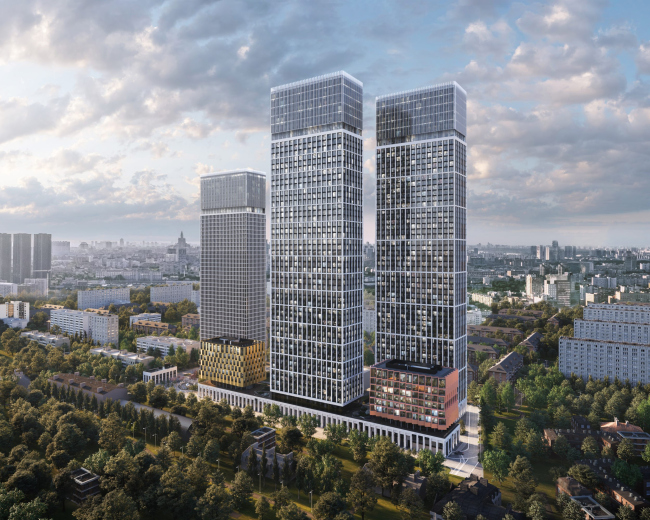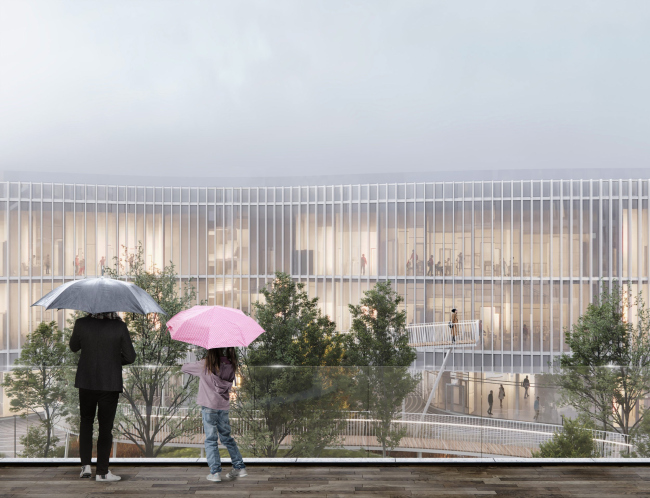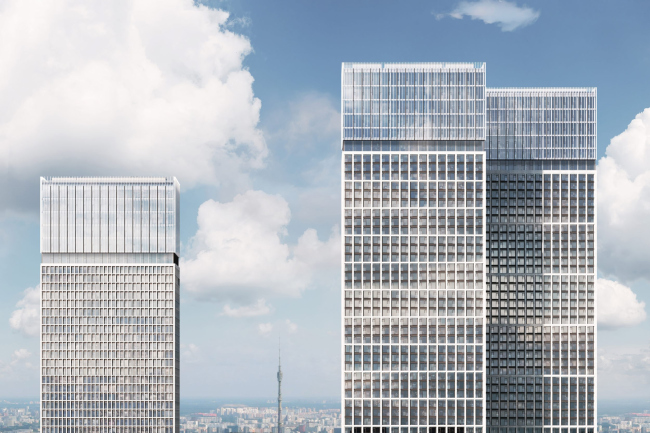|
Published on Archi.ru (https://archi.ru) |
|
| 06.09.2021 | |
|
Dialectical Manifesto |
|
|
Julia Tarabarina |
|
| Architect: | |
| Sergey Pereslegin | |
| Nikolay Pereslegin | |
| Georgy Trofimov | |
| Studio: | |
| Kleinewelt Architekten | |
|
The high-rise housing complex MOD, whose construction has begun in Moscow’s district of Maryina Roshcha next to the site, on which the new Russian Railways headquarters will be built, is responding to the “central” context of the future city surroundings, and at the same time is positioned by the architects as a “manifesto of Modernist minimalist principles in architecture”. The place for constructing the new premium-class housing complex MOD, designed for MR Group by Kleinewelt Architekten, is far from simple but very promising. 400 meters west from it, a new exit from “Maryina Roshcha” metro station belonging to the Moscow Big Circle is being constructed, 300 meters north – yet another exit belonging to the Moscow Central Diameter. A large-scale transport hub is expected to appear here. In short, this place has potential. The final diagram of the entire complex. MOD housing complex. The conceptual diagrams.Copyright: © Kleinewelt Architekten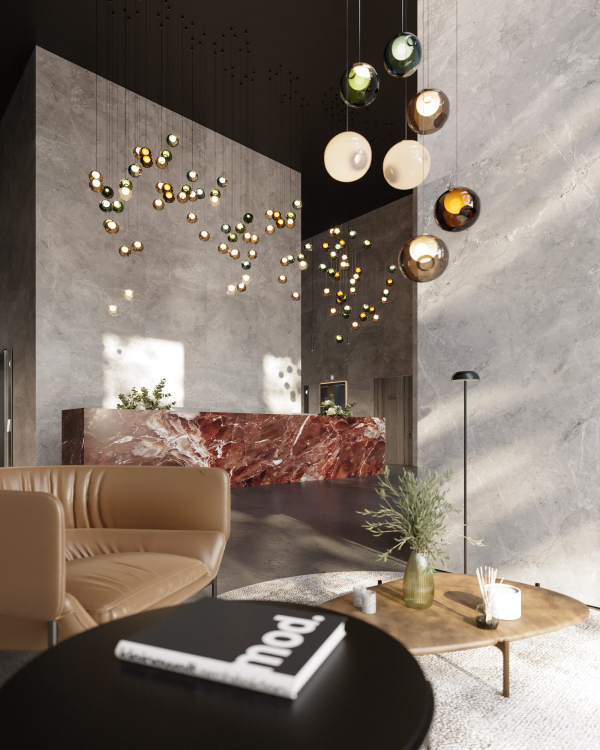 Building D. MOD housing complex. The projectCopyright: © Kleinewelt Architekten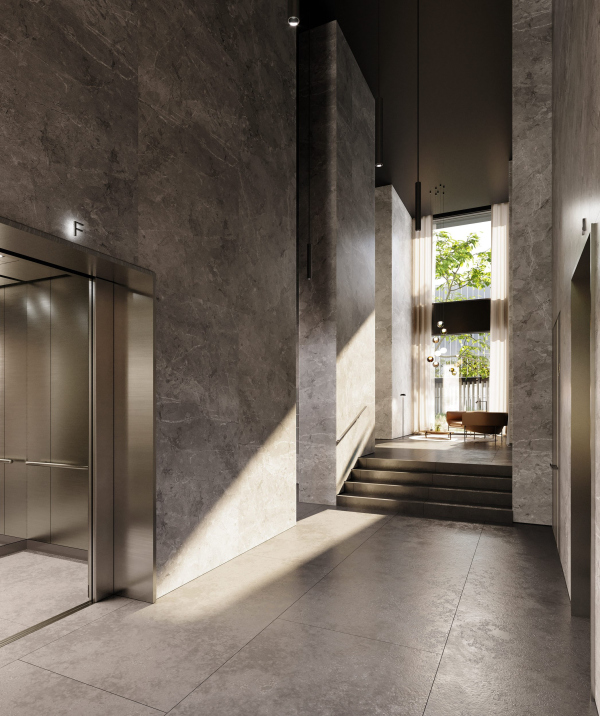 Building D. MOD housing complex. The projectCopyright: © Kleinewelt Architekten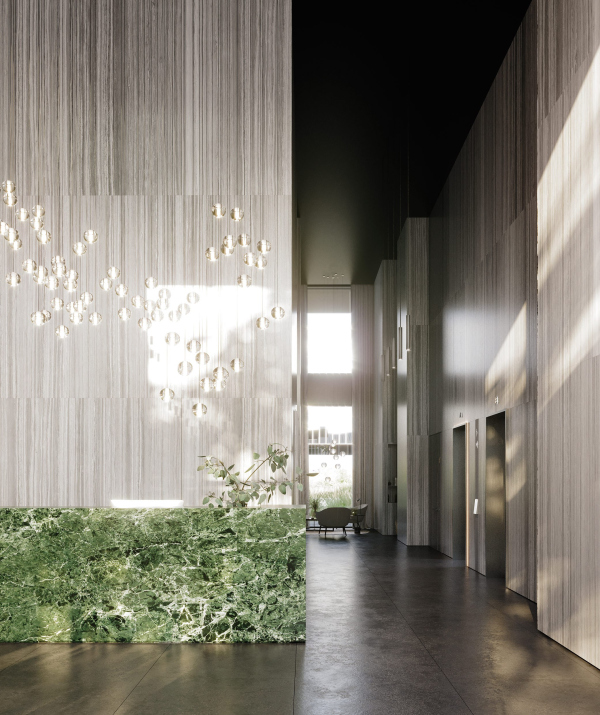 Building D. MOD housing complex. The projectCopyright: © Kleinewelt Architekten MOD housing complex. The projectCopyright: © Kleinewelt Architekten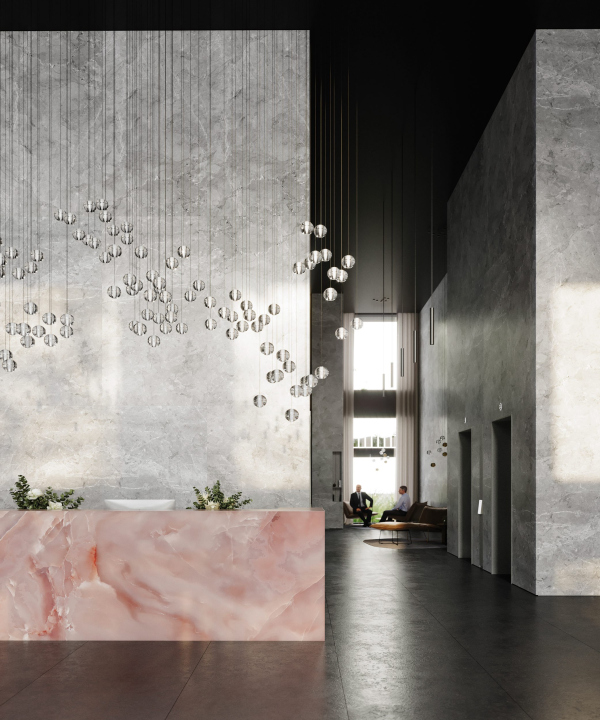 MOD housing complex. The projectCopyright: © Kleinewelt Architekten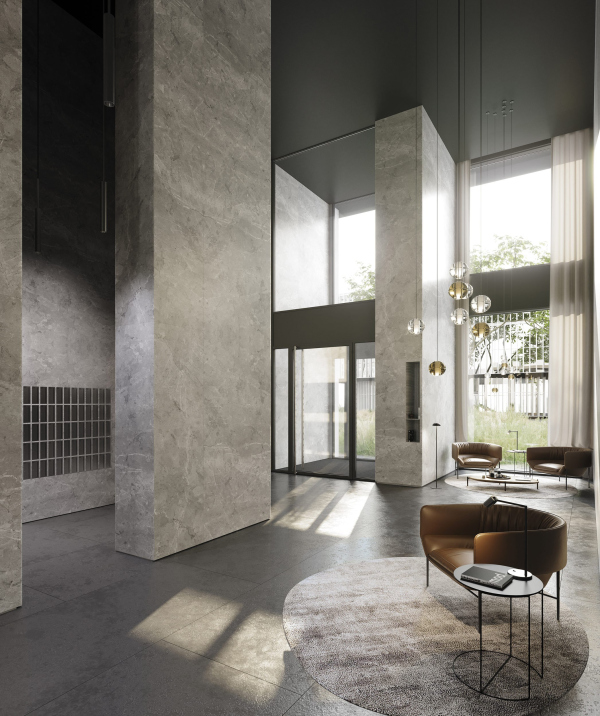 MOD housing complex. The projectCopyright: © Kleinewelt Architekten Building C. MOD housing complex. The projectCopyright: © Kleinewelt Architekten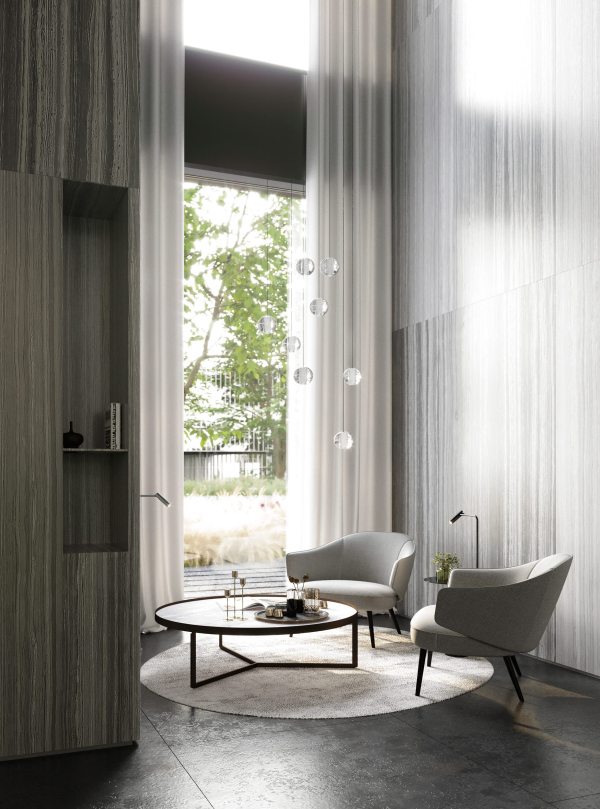 Building M. MOD housing complex. The projectCopyright: © Kleinewelt Architekten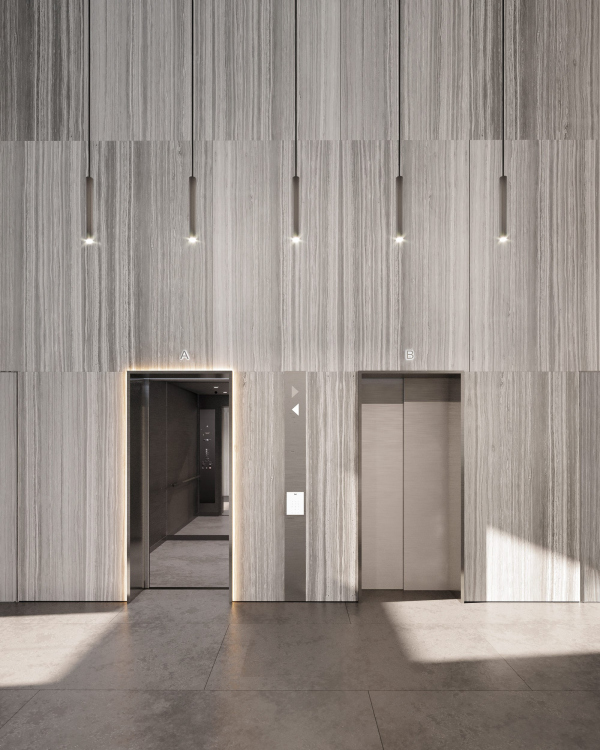 Buildin M. MOD housing complex. The projectCopyright: © Kleinewelt Architekten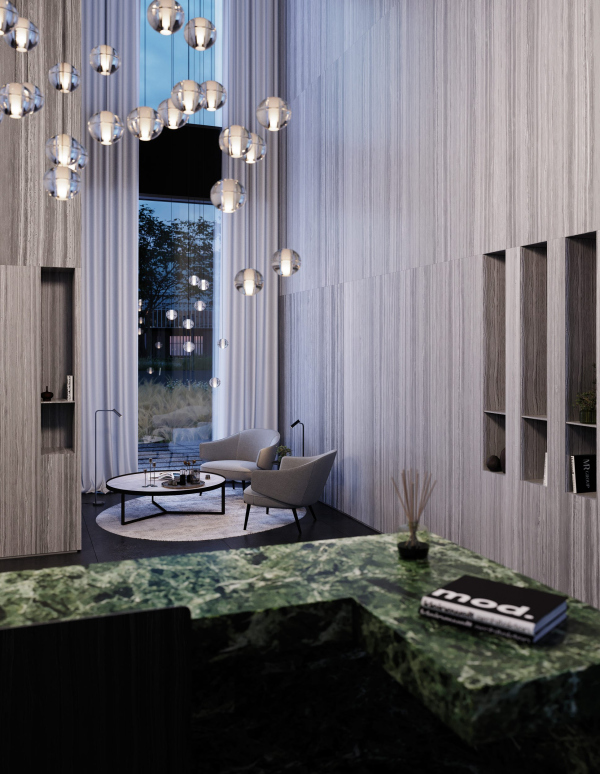 MOD housing complex. The projectCopyright: © Kleinewelt ArchitektenInterestingly, the “lines” are treated differently, proceeding from the architects’ understanding of the specifics of the context – not today’s one, but the one that will be formed after the construction of the Russian Railways headquarters will be completed in the place of the former loading bay. According to Nikken Sekkei’s plan, the headquarters building must be strung upon an inner covered roof, creating a new center for business and other activities. This way, the future east side, turned to the headquarters, will be more of the “city” kind typology-wise. Accordingly, the authors of the project gave this part more of a city character. One tower and two 9-story houses 38.3 meters high each spring from an elongated two-story stylobate 9 meters high with cafes and shops in it. Its facades are designed as an austere pylonnade; there is a pedestrian gallery stretching along the shop windows from the headquarters side. In the north part, the stylobate makes a break: here, further away from the center of the headquarters, a square public plaza appears, open eastward, and stopped by a transversal 2-story volume, which looks like a fragment of the stylobate set aside, at the other end of the site. MOD housing complex. The projectCopyright: © Kleinewelt ArchitektenThe plaza is situated on the territory of the housing complex, but it is open for everyone, and is meant, just as the “Rivoli Street” of shops and cafes in the stylobate, contribute to integrating the complex into the future city life. 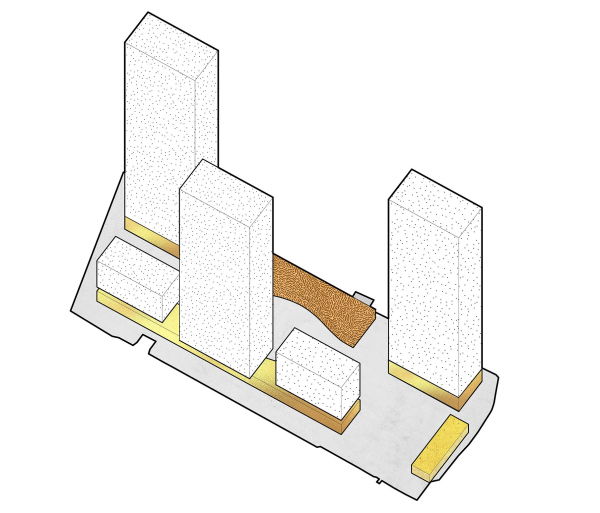 The functional zoning flowchart. MOD housing complex. The conceptual diagramsCopyright: © Kleinewelt Architekten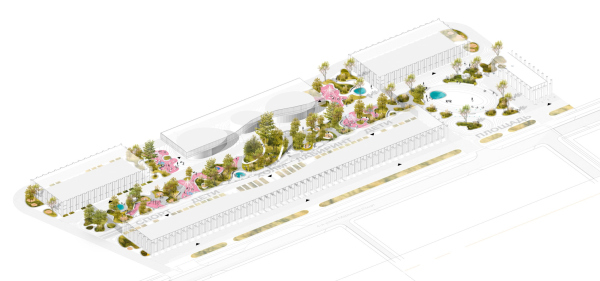 MOD housing complex. The projectCopyright: © Kleinewelt Architekten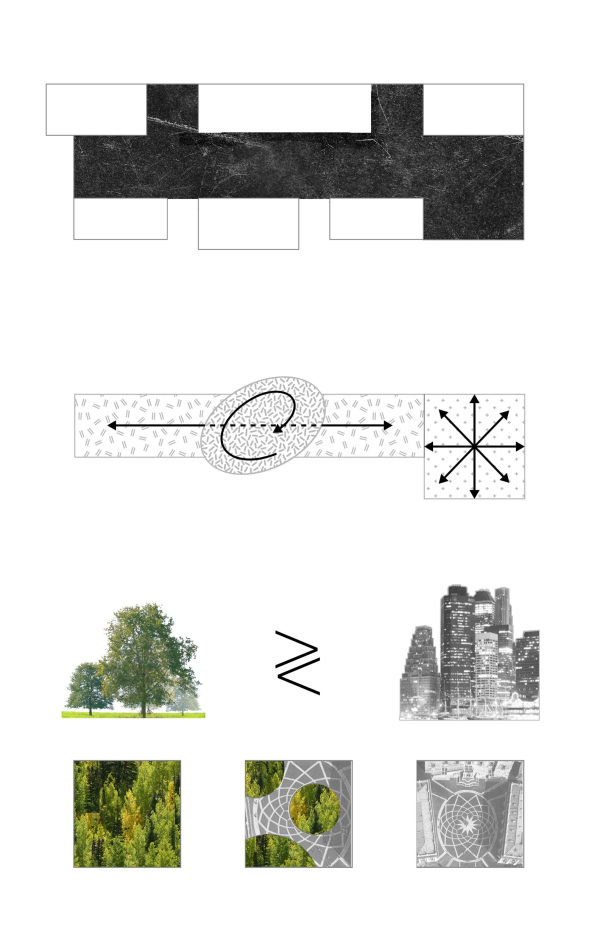 A simplified master plan. MOD housing complex. The projectCopyright: © Kleinewelt Architekten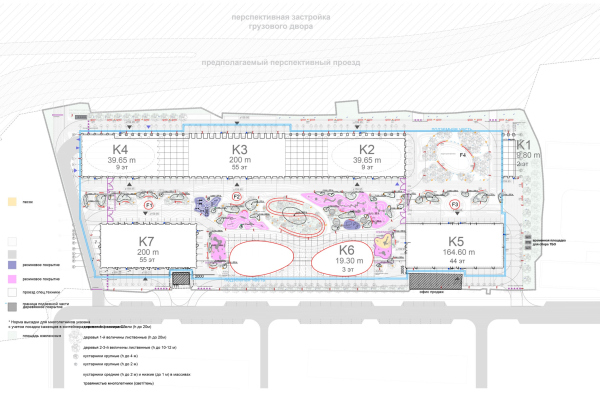 The master plan. MOD housing complex. The projectCopyright: © Kleinewelt ArchitektenFurther north between the two lines of houses, stretches the complex’s private yard, that looks more even like an inner promenade. It is separated from the plaza by a fence, but it is situated on the same level. On the roof of the stylobate in its eastern part, there will be two small private parks between the two windows – the architects call them “the second level of the private garden”; from here, one will be able to look at the “promenade” yard and at the city below. This way, several levels of openness / privacy are formed, as well as several emotional levels of perception of the space from within and from without. 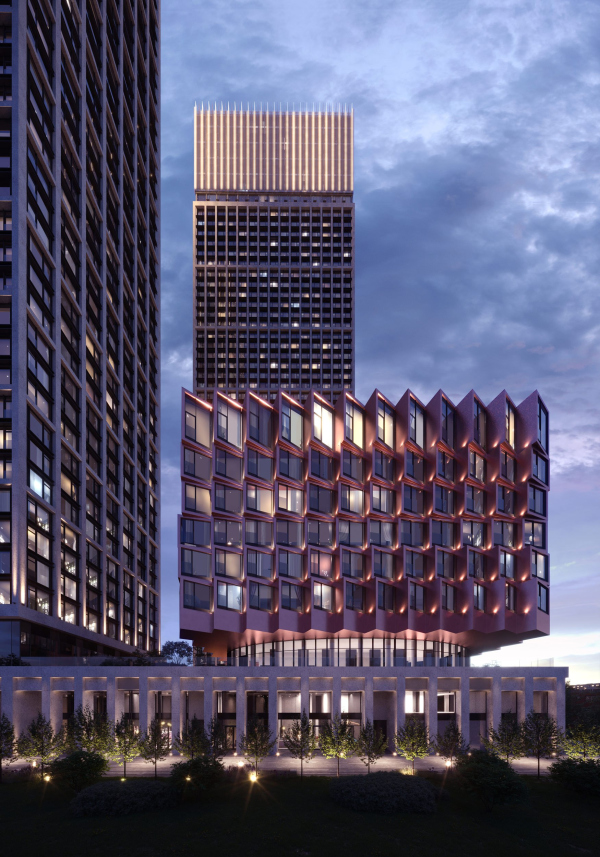 MOD housing complex. The projectCopyright: © Kleinewelt Architekten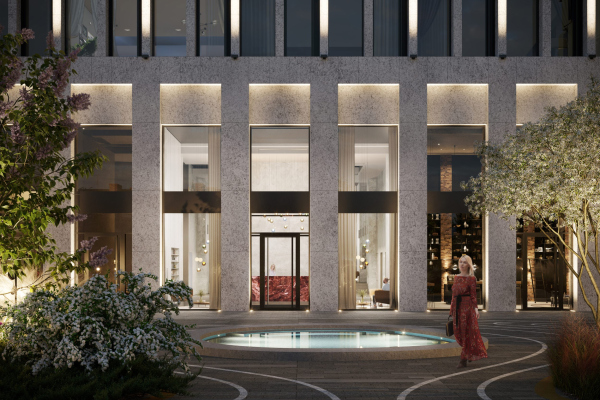 MOD housing complex. The projectCopyright: © Kleinewelt Architekten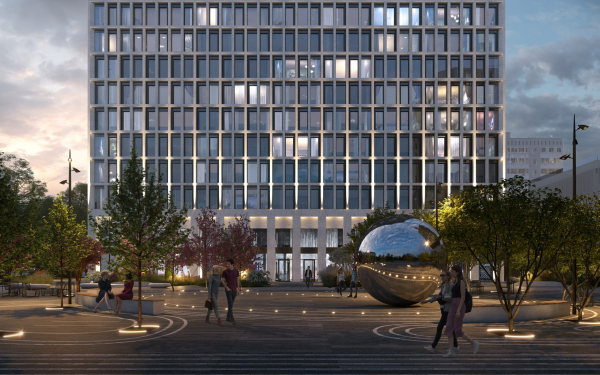 MOD housing complex. The projectCopyright: © Kleinewelt ArchitektenThe “promenade” yard is packed with functions, zoned by geoplastics, and is connected by a network of trails; playgrounds alternate with workouts, hills alternate with small ponds. The center of the complex is a spiral walkway raised above the ground – a spatial attraction that allows one to rise to the height of the roof of the eastern stylobate and then descend along a gentle curve. 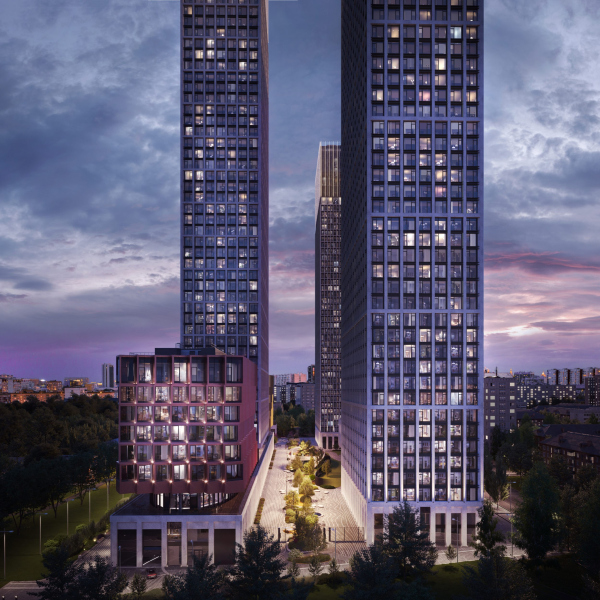 View from north to south. MOD housing complex. The projectCopyright: © Kleinewelt Architekten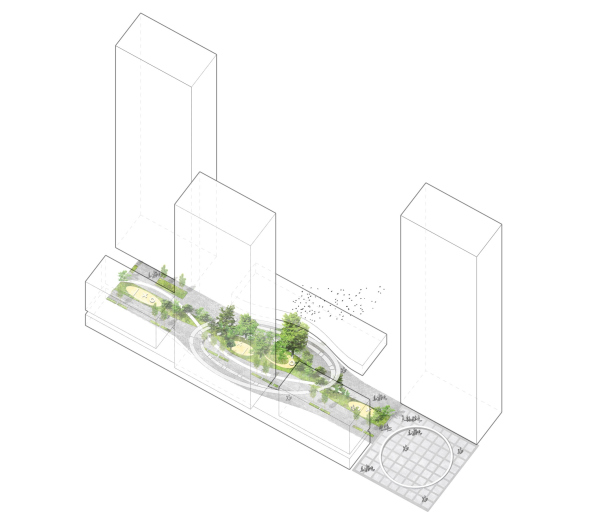 The yard. MOD housing complex. The conceptual diagramsCopyright: © Kleinewelt Architekten MOD housing complex. The projectCopyright: © Kleinewelt Architekten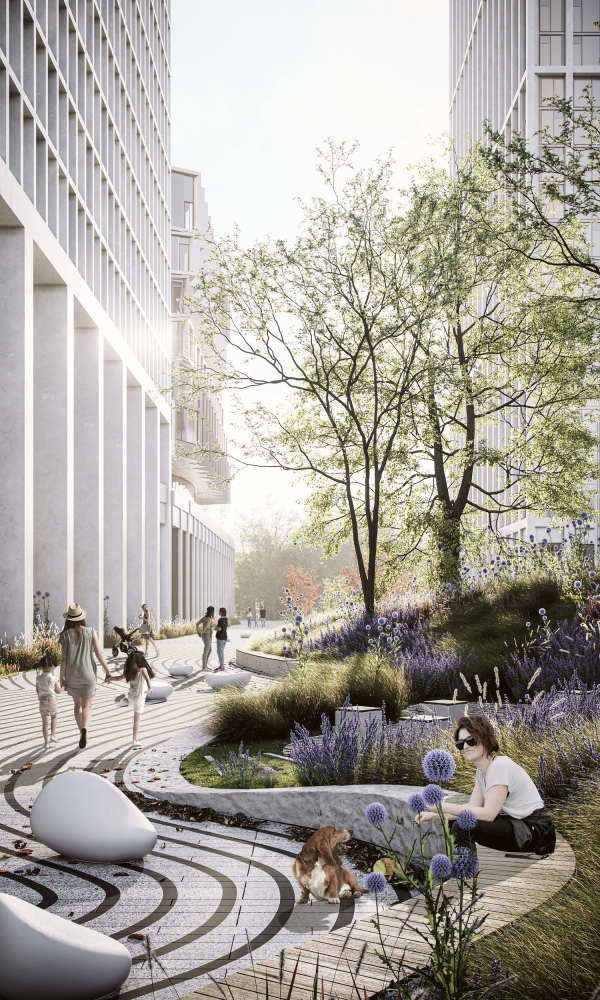 The inner promenade. MOD housing complex. The projectCopyright: © Kleinewelt Architekten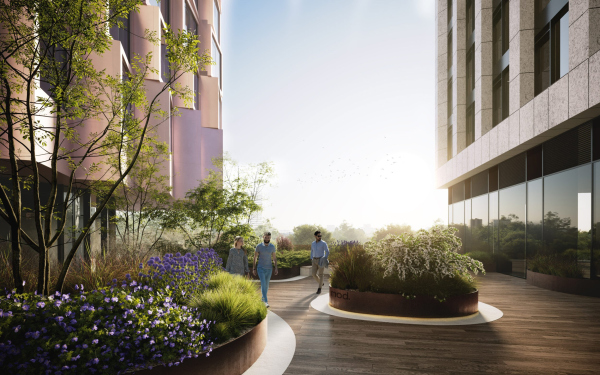 The landscaped roof of the stylobate of the eastern part. MOD housing complex. The projectCopyright: © Kleinewelt Architekten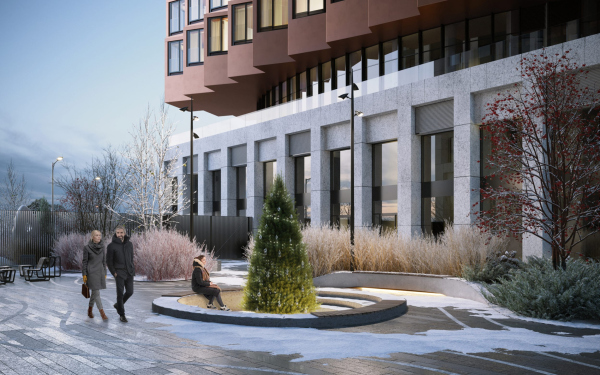 MOD housing complex. The projectCopyright: © Kleinewelt ArchitektenIn the eastern part, adjoining the stylobate, the planning lines are straighter and more austere, while in the west part, turned to the city in its current state, and to Maryina Roshcha with its abundant greenery and low-rise buildings, everything becomes more flexible and open. The architects are clearly treating this part of the city as a park, something like a “garden city”, as opposed to the business activity of the opposite side. Here two towers are situated, 200 and 165 meters high, with a 3-story volume 19 meters high between them – a school and a kindergarten. From the west side, there is no “beam” of the stylobate – hence, there are spaces between the buildings that allow you to peek from the street into the yard, while the school in the lower tier rests on glass supports of an oval section – short breaks appear between them as well, allowing you to look from the yard in the direction of Maryina Roshcha and vice versa, which forms “interflowing of spaces”, visual at least. The main facade of the school facing the inner promenade was formed, as the architects’ diagrams show, through a dialogue with a green hill under a spiral ramp – it seems to be “pressed through”, which makes it acquire a flexible outline that fits so well with milk lamellas, especially in perspective.  The landscaping of the roof and the stylobate. MOD housing complex. The projectCopyright: © Kleinewelt Architekten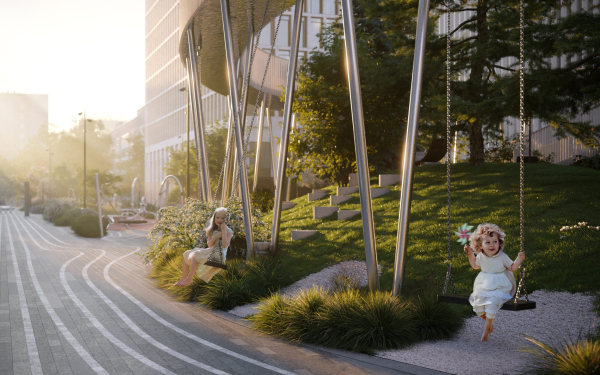 The landscaping of the errotory and the stylobate roof. MOD housing complex. The projectCopyright: © Kleinewelt Architekten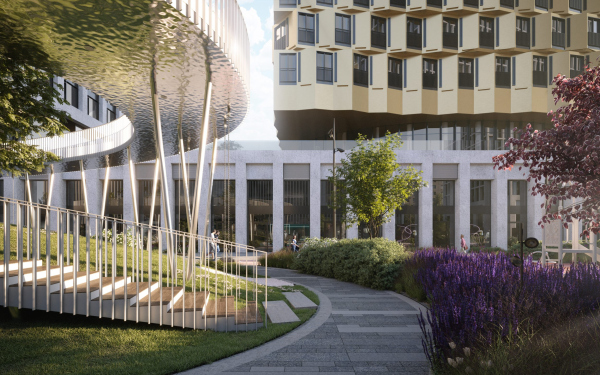 MOD housing complex. The projectCopyright: © Kleinewelt Architekten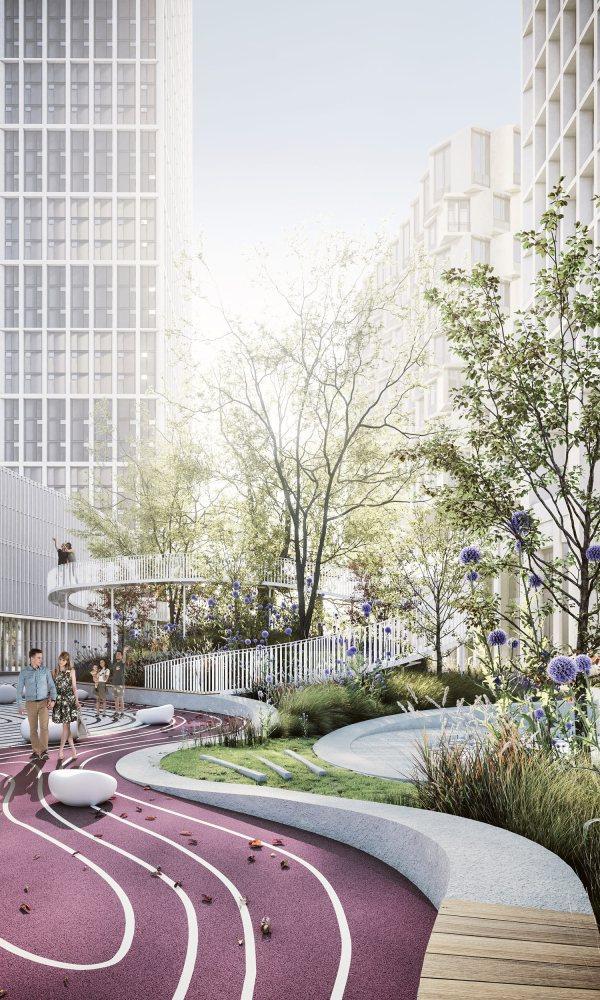 MOD housing complex. The projectCopyright: © Kleinewelt Architekten The organization of the territory and the stylobate roof. MOD housing complex. The projectCopyright: © Kleinewelt Architekten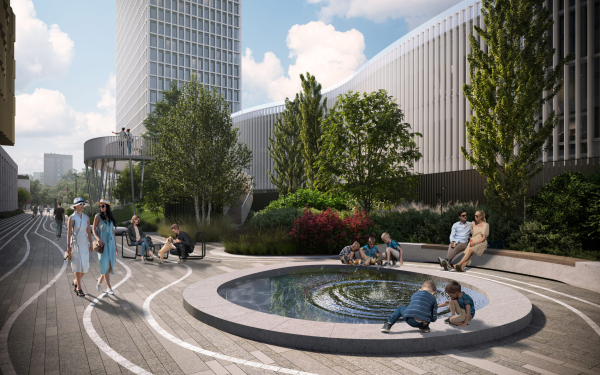 The landscaping of the errotory and the stylobate roof. MOD housing complex. The projectCopyright: © Kleinewelt Architekten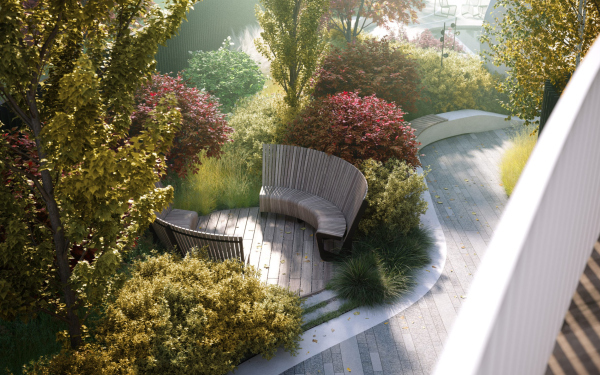 The organization of the territory and the stylobate roof. MOD housing complex. The projectCopyright: © Kleinewelt ArchitektenThe facade plastique of the minor volumes picks up this theme: they are designed in deliberately different ways of emotional energetics, which will be formed on two different sides of the complex. The two 9-story houses, just like the school, grow from circular glass podiums – but their “legs” are strictly elliptical and rest on a stylobate. They carry parallelepipeds with a complex sculptural surface. The facades of a red copper hue are composed of triangular bay windows framing each window as a relief cell; in each of the levels, the turning angle is different, which is why the top six floors begin to look like bands of conveyor belts, each one rotating in its own cycle, gradually changing pitch. The plastique is active; at the corners, at top and bottom, the volumetric elements stand almost at a 45-degree angle. The corner volume “works” as a giant sculpture. 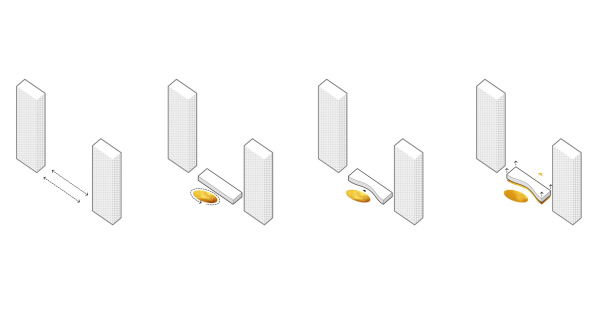 The school building. MOD housing complex. The conceptual diagramsCopyright: © Kleinewelt Architekten The concept of the school building. MOD housing complex. The conceptual diagrams.Copyright: © Kleinewelt Architekten The school building. MOD housing complex. The conceptual diagrams.Copyright: © Kleinewelt Architekten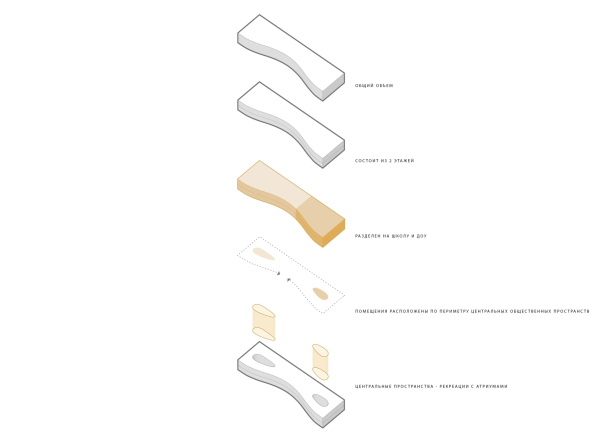 The school building. MOD housing complex. The conceptual diagrams.Copyright: © Kleinewelt Architekten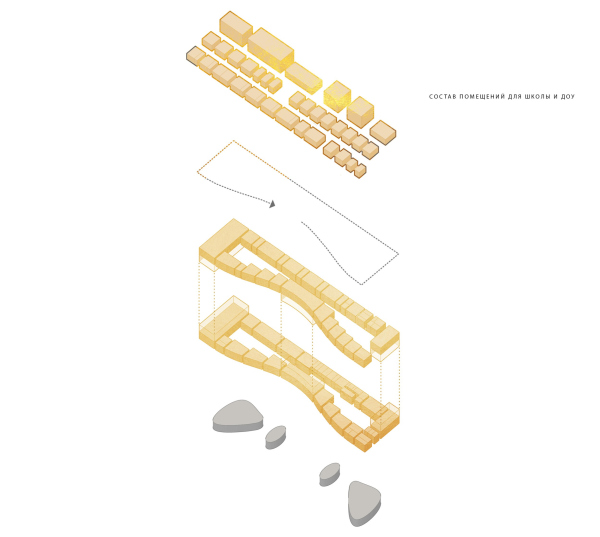 The school building. MOD housing complex. The conceptual diagrams.Copyright: © Kleinewelt Architekten The school building. MOD housing complex. The conceptual diagrams.Copyright: © Kleinewelt ArchitektenIn the opposite building, which is golden yellow, the same techniques are softened, the offsets and the turns of the triangular bay windows are identical, even though aligned in a chessboard order – the image is less dramatic, and maybe even partly “jewelry-precious”.  MOD housing complex. The projectCopyright: © Kleinewelt Architekten MOD housing complex. The projectCopyright: © Kleinewelt Architekten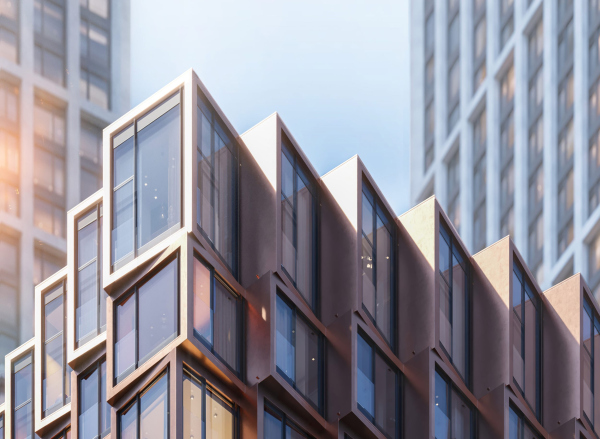 MOD housing complex. The projectCopyright: © Kleinewelt Architekten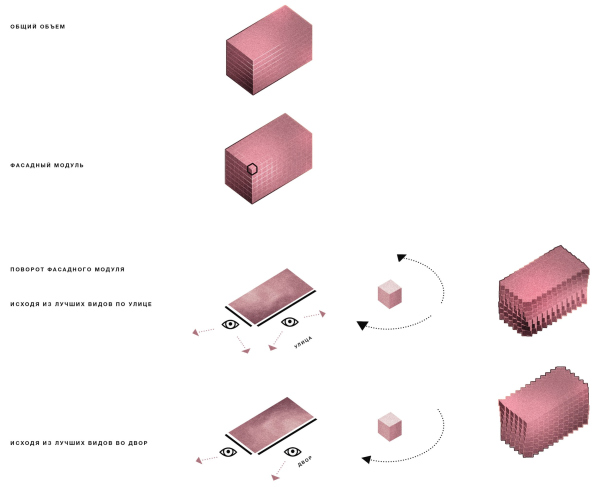 MOD housing complex. The conceptual diagramsCopyright: © Kleinewelt Architekten MOD housing complex. The projectCopyright: © Kleinewelt ArchitektenTogether, the two houses and the tower that they flank create an axial composition with variations, which not only do not violate but even enhance the symmetry of the volumes on the sides of the significantly elevated center. The third, relatively low-rise, volume, situated, as we remember, from the side of Maryina Roshcha between the two other residential towers, has a uniquely small – by the standards of this complex – height of 19.3 meters, a long length, a transparent bottom tier, as well as some flexibility and even softness of form. Unlike the other buildings, it stands not upon the stylobate but on the ground; the rounded glass volumes of the first floor are asymmetrical, and the wavy facade of the two upper floors is formed by milky glass and thin vertical lamellas. The third volume can be understood as something that is opposed to the two 9-story houses: those two are all glittering metal and jagged edges, and this volume is all flowing, enshrouded in a gentle opaque glow. 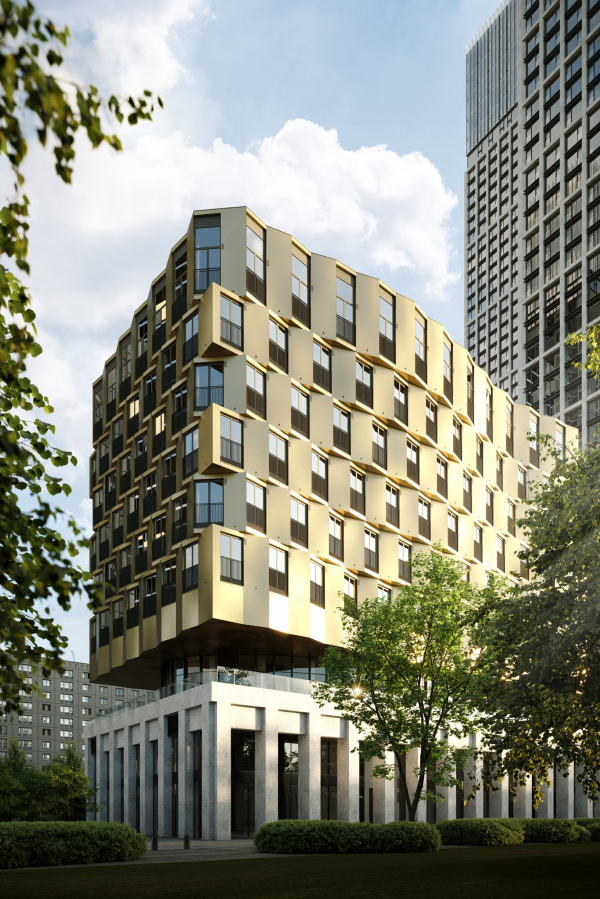 MOD housing complex. The projectCopyright: © Kleinewelt Architekten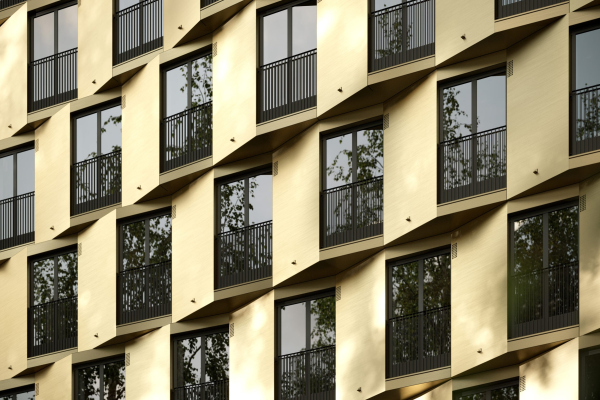 MOD housing complex. The projectCopyright: © Kleinewelt Architekten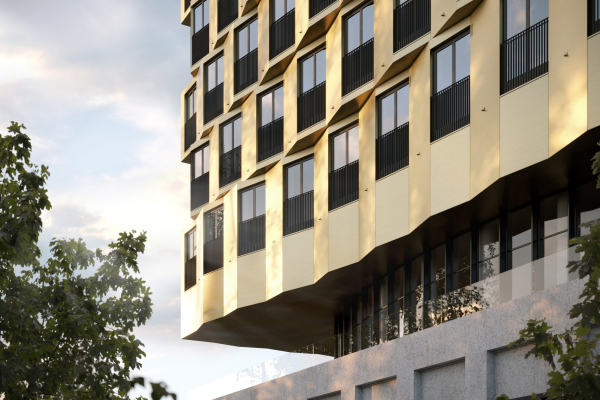 MOD housing complex. The projectCopyright: © Kleinewelt Architekten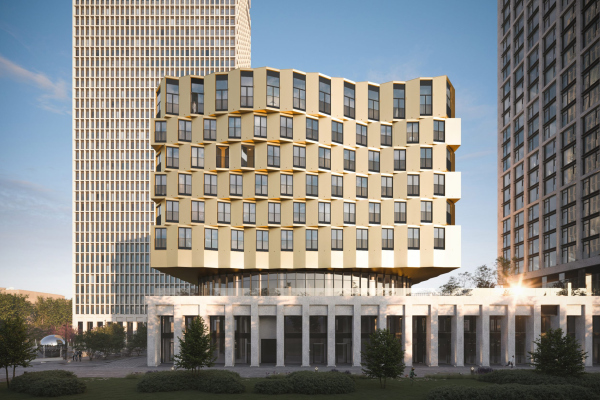 MOD housing complex. The projectCopyright: © Kleinewelt Architekten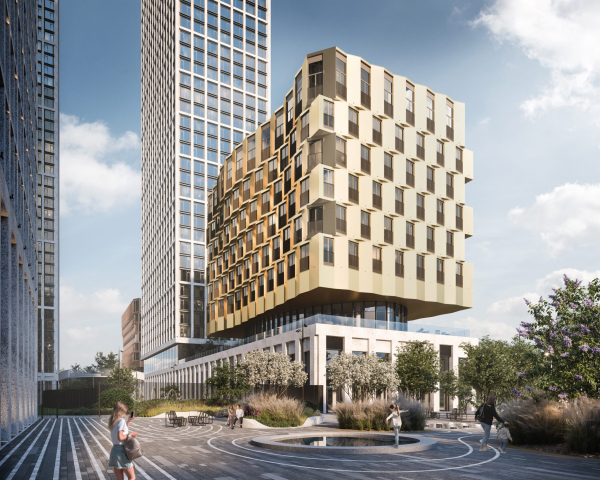 MOD housing complex. The projectCopyright: © Kleinewelt Architekten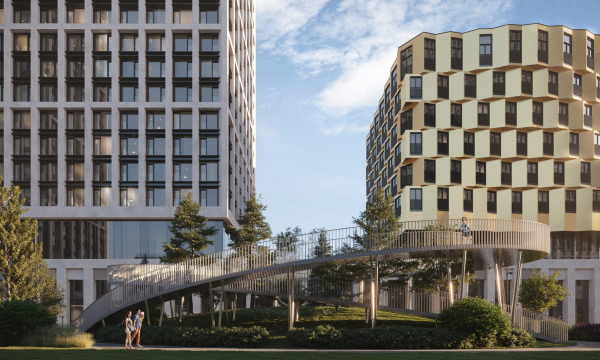 MOD housing complex. The projectCopyright: © Kleinewelt Architekten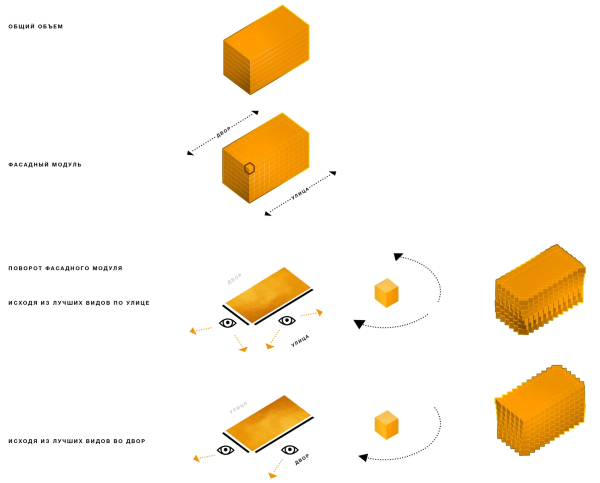 MOD housing complex. The conceptual diagramsCopyright: © Kleinewelt Architekten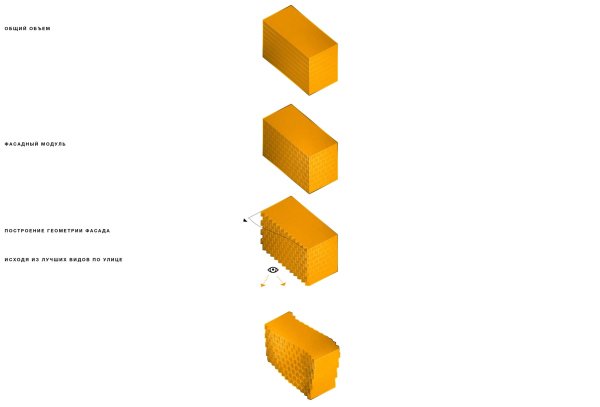 MOD housing complex. The conceptual diagramsCopyright: © Kleinewelt ArchitektenMOD housing complex. The projectCopyright: © Kleinewelt ArchitektenThe contrastive and individual design of each small volume as part of the complex seems to make perfect sense: it is these small buildings that we subconsciously perceive as “human-friendly” – and they are responsible for building up a dialogue with the surrounding space. The towers, on the other hand, are a different matter – “soaring upwards”, they go to a whole new level of abstraction. The high-rise volumes are rather similar to one another; their planning solutions are optimized and all but identical, and their facades are subjugated to a fine light-colored grid with a significant, about 70 cm, offset of the ribs and a high degree of distribution. The difference between the grids is based on a decrease in the step from south to north: in the third tower of smaller height, the grid is crushed, the width is decreased by half, and the height by three times. The edges of the facade grid will be covered with light limestone. MOD housing complex. The projectCopyright: © Kleinewelt ArchitektenThe towers are stretched lengthwise, the aspect ratio being one to two-something; in this, they echo the elongated shape of the site, so, when viewed en face, the volumes are slender, and, if you look from east or west, rather imposing.  MOD housing complexCopyright: © Kleinewelt Architekten MOD housing complexCopyright: © Kleinewelt Architekten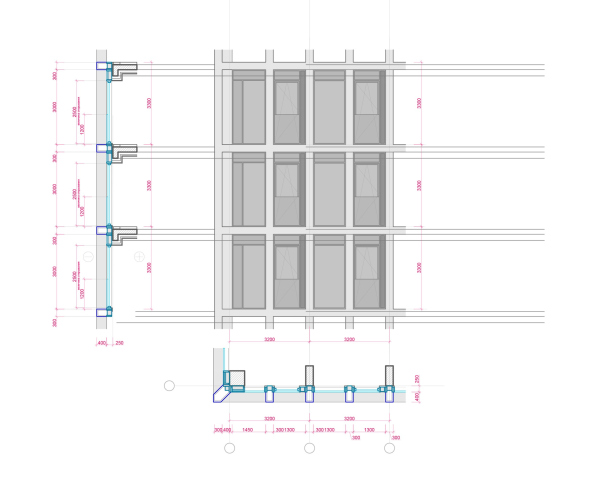 MOD housing complex.Copyright: © Kleinewelt Architekten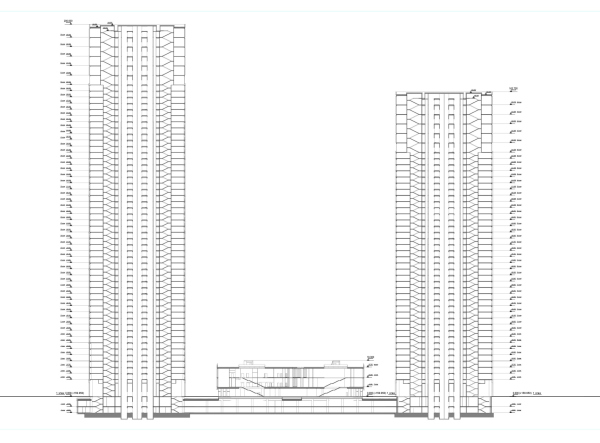 MOD housing complex. The projectCopyright: © Kleinewelt Architekten Plan of the standard floor. MOD housing complex. The projectCopyright: © Kleinewelt ArchitektenAll the three towers are crowned with golden “heads” of the attics with slender lamellas of anodized aluminum, which host 6 floors of penthouses: the ceilings height here is 4.8 meters instead of the standard 3.3 in the main part. These apartments can easily include lofts or double-height rooms. 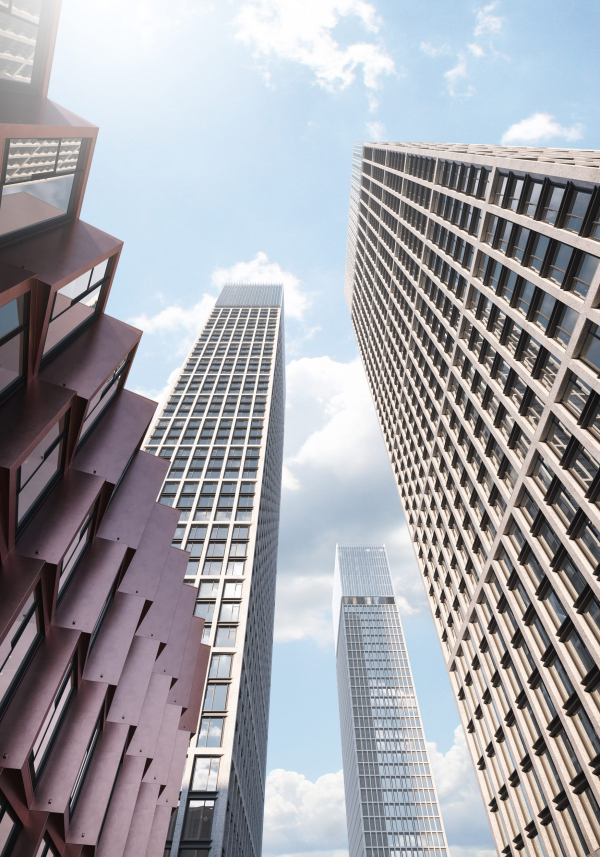 MOD housing complex. The projectCopyright: © Kleinewelt Architekten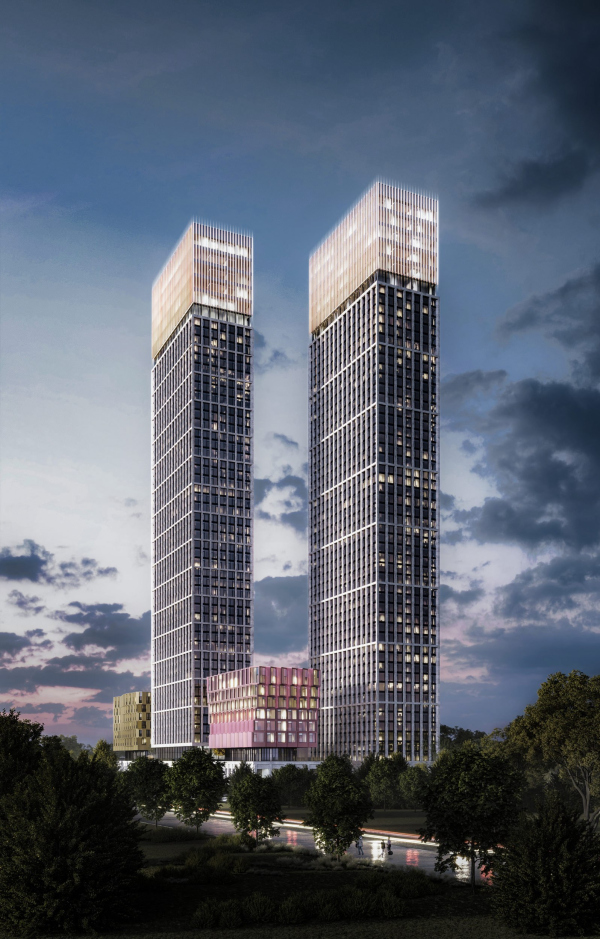 MOD housing complex. The projectCopyright: © Kleinewelt Architekten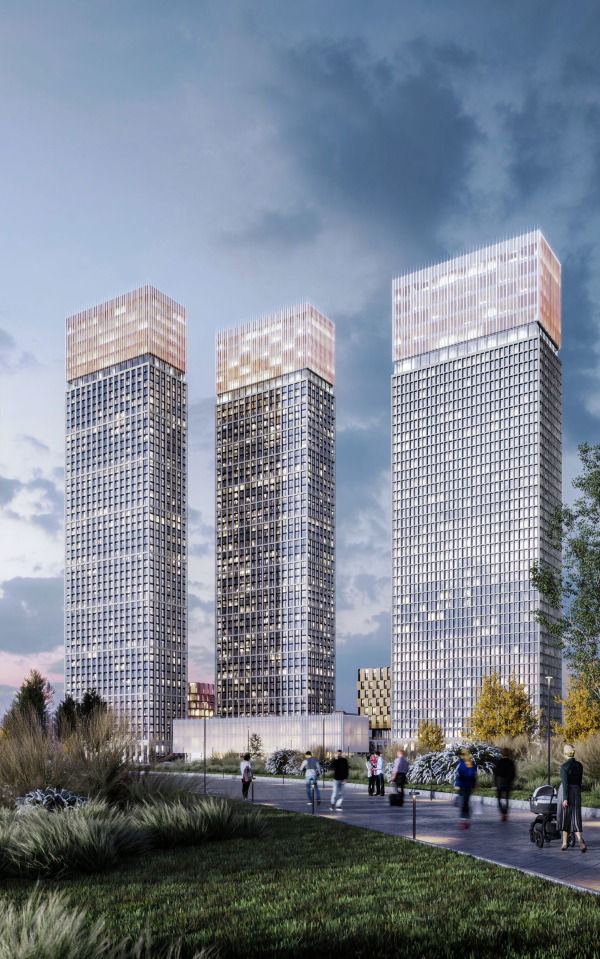 MOD housing complex. The projectCopyright: © Kleinewelt Architekten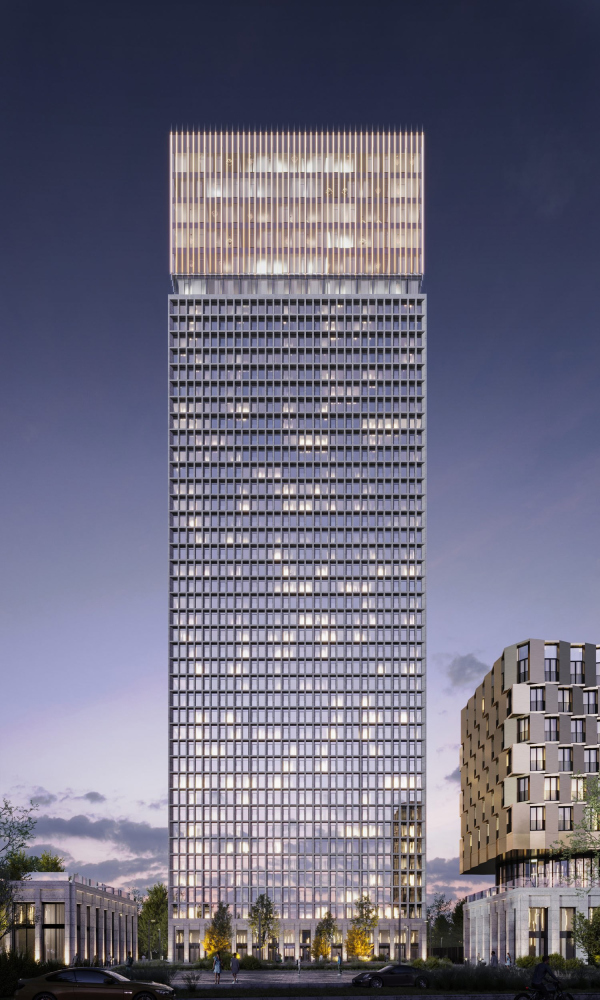 MOD housing complex. The projectCopyright: © Kleinewelt Architekten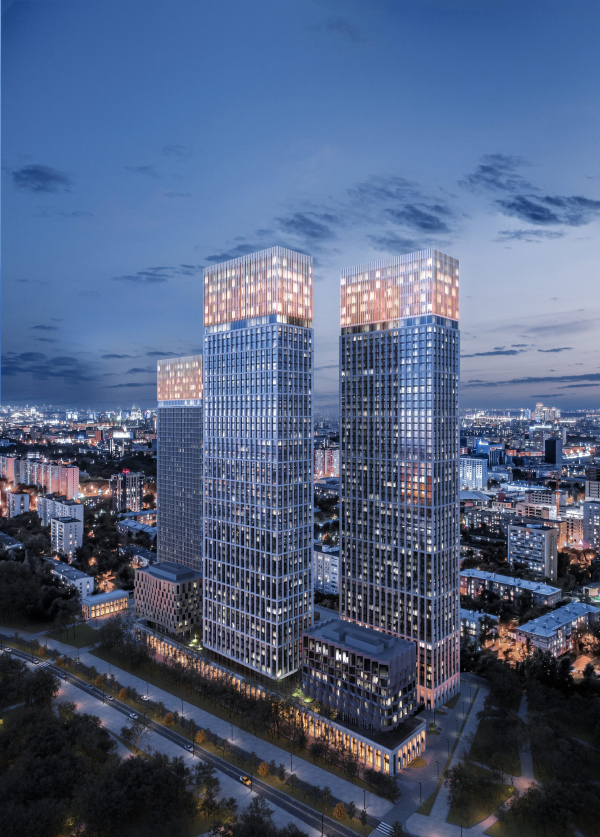 MOD housing complex. The projectCopyright: © Kleinewelt Architekten MOD housing complex. The projectCopyright: © Kleinewelt Architekten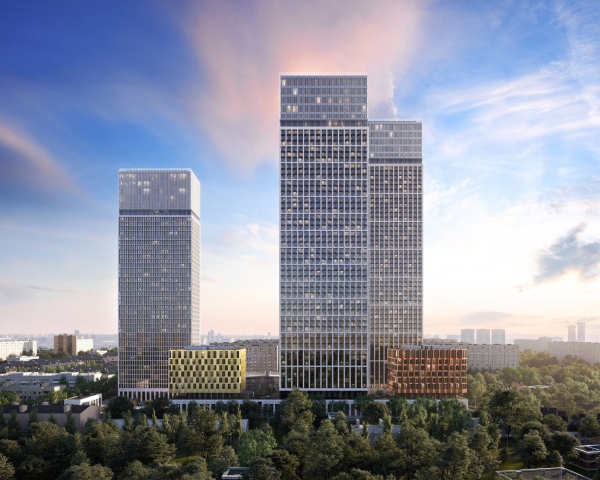 MOD housing complex. The projectCopyright: © Kleinewelt Architekten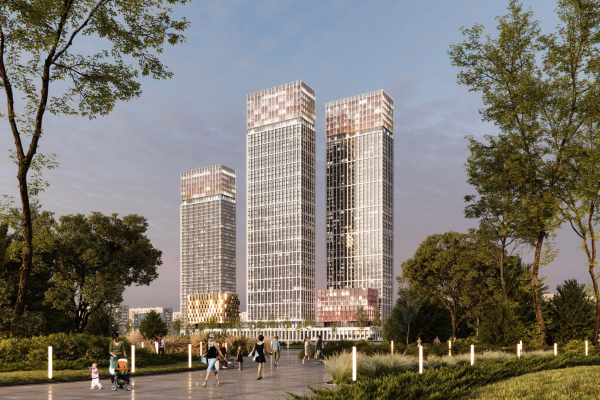 MOD housing complex. The projectCopyright: © Kleinewelt Architekten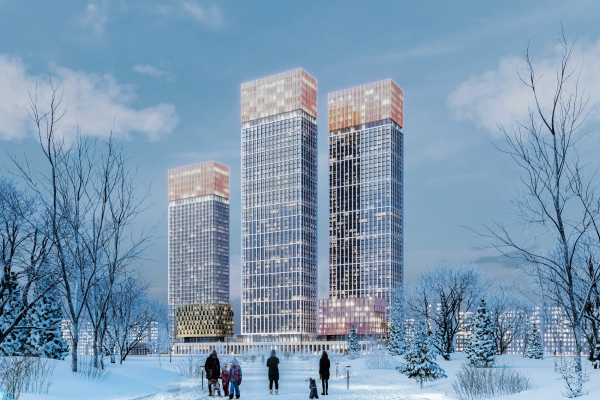 MOD housing complex. The projectCopyright: © Kleinewelt Architekten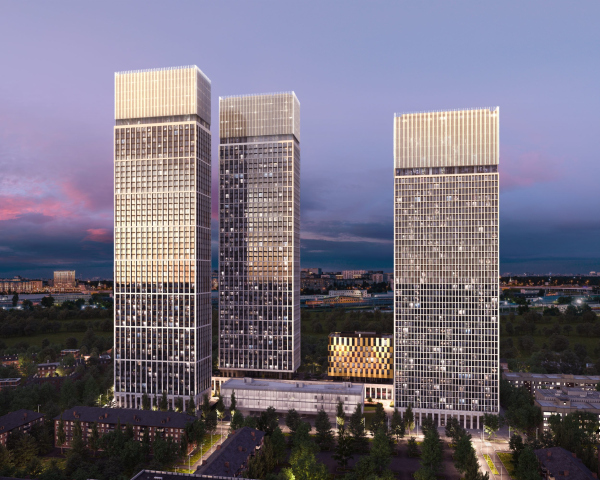 MOD housing complex. The projectCopyright: © Kleinewelt ArchitektenSpecial mention should be given to the interiors – they are drawn for the lobbies for the standard floors even for the parking garages. They are laconic and are generally based on the optic contrast between black and white. From time to time an inversion occurs: black replaces weight and vice versa. This happens in the minor units and in the parking garages. 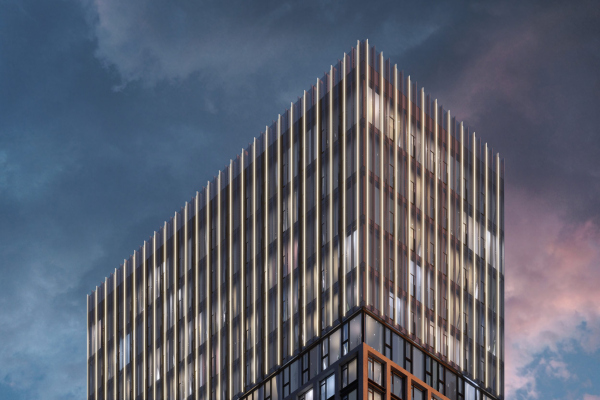 MOD housing complex. The projectCopyright: © Kleinewelt Architekten MOD housing complex. The projectCopyright: © Kleinewelt Architekten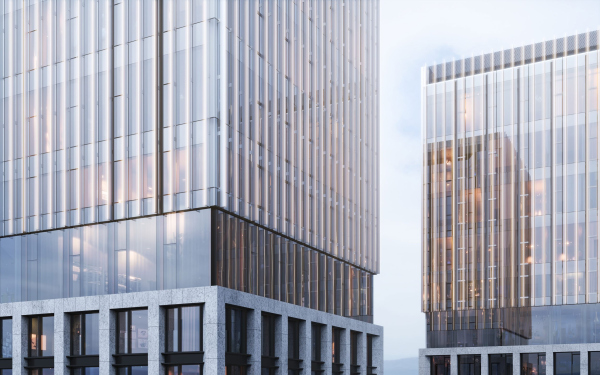 MOD housing complex. The projectCopyright: © Kleinewelt Architekten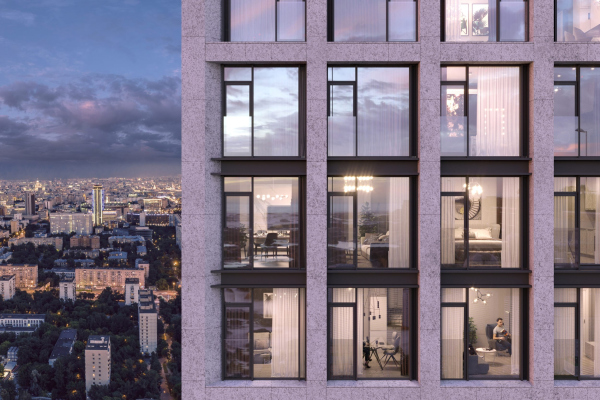 MOD housing complex. The projectCopyright: © Kleinewelt ArchitektenHowever, as the significance of the space grows, more significance is attached to the texture of various degrees of “preciousness”. It marks various important elements, chief of them being the reception desk; then it becomes more complex and richer in color in the towers. The height of all of the lobby ceilings is 6 meters. The intensity of color and the complexity of the pattern of stone streaks grow every so smoothly, from building to building, in order to make a “crescendo” in the dark crimson reception desk of Building 7, glowing from the inside. At the same time, the architects carefully observe the uniformity principle: the proportions of all the lobbies stay within the same limits. 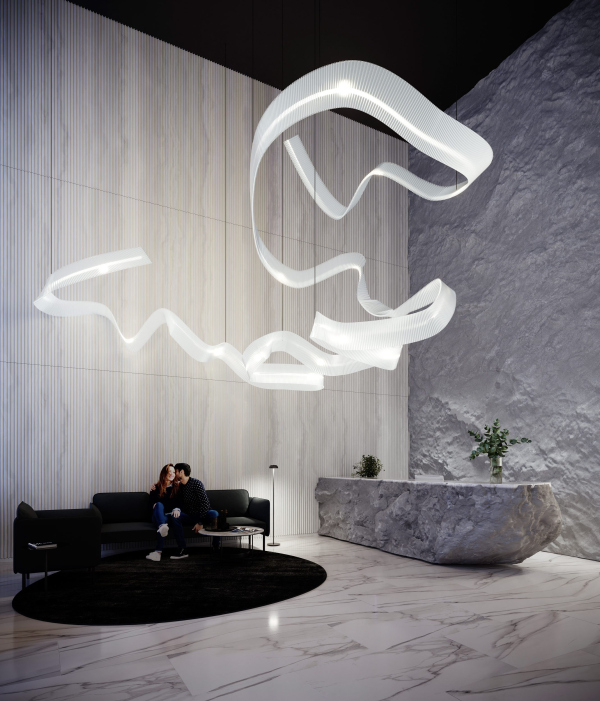 Building S. MOD housing complex. The projectCopyright: © Kleinewelt Architekten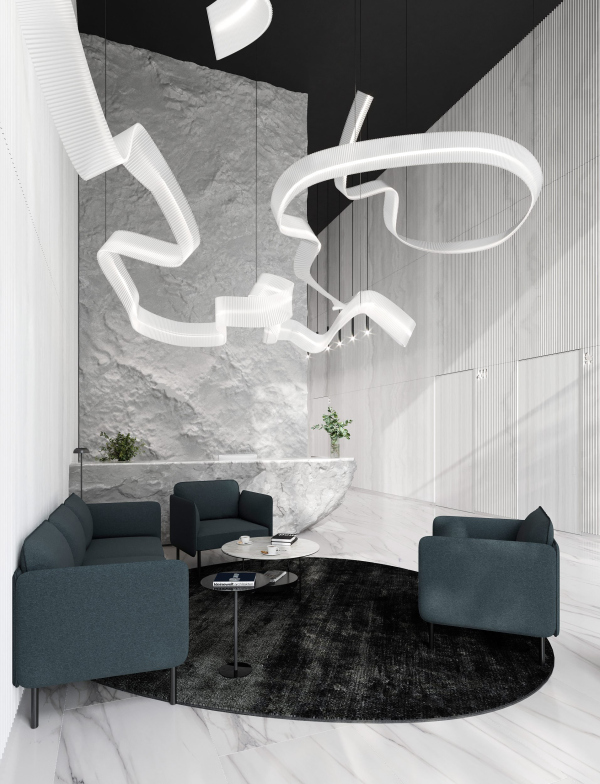 Building S. MOD housing complex. The projectCopyright: © Kleinewelt Architekten MOD housing complex. The projectCopyright: © Kleinewelt Architekten The guest bathroom. MOD housing complex. The projectCopyright: © Kleinewelt Architekten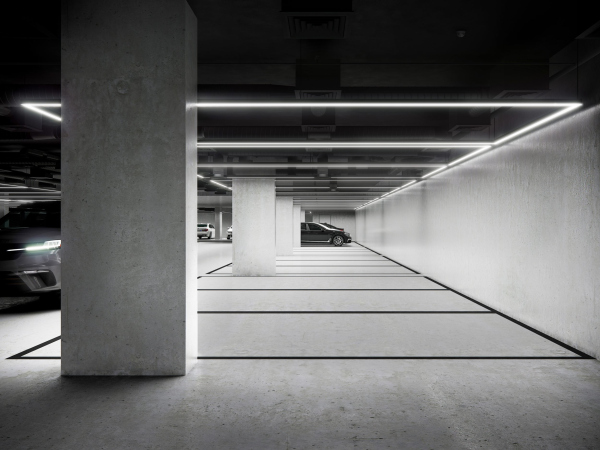 MOD housing complex. The projectCopyright: © Kleinewelt Architekten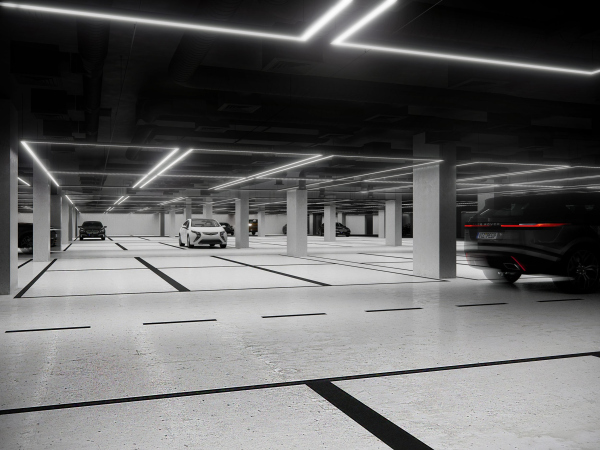 The interior of the parking garage. MOD housing complex. The projectCopyright: © Kleinewelt Architekten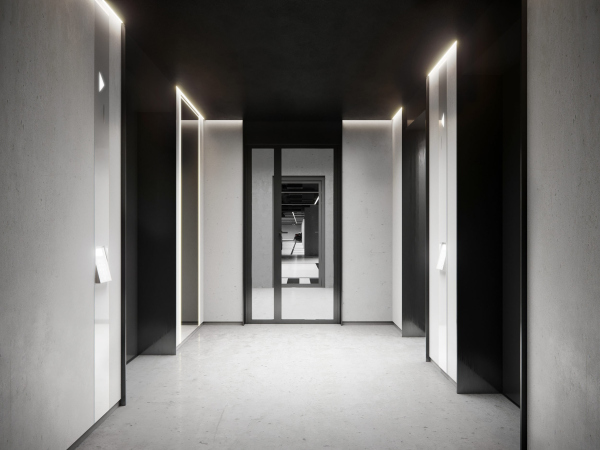 MOD housing complex. The projectCopyright: © Kleinewelt Architekten MOD housing complex. The projectCopyright: © Kleinewelt Architekten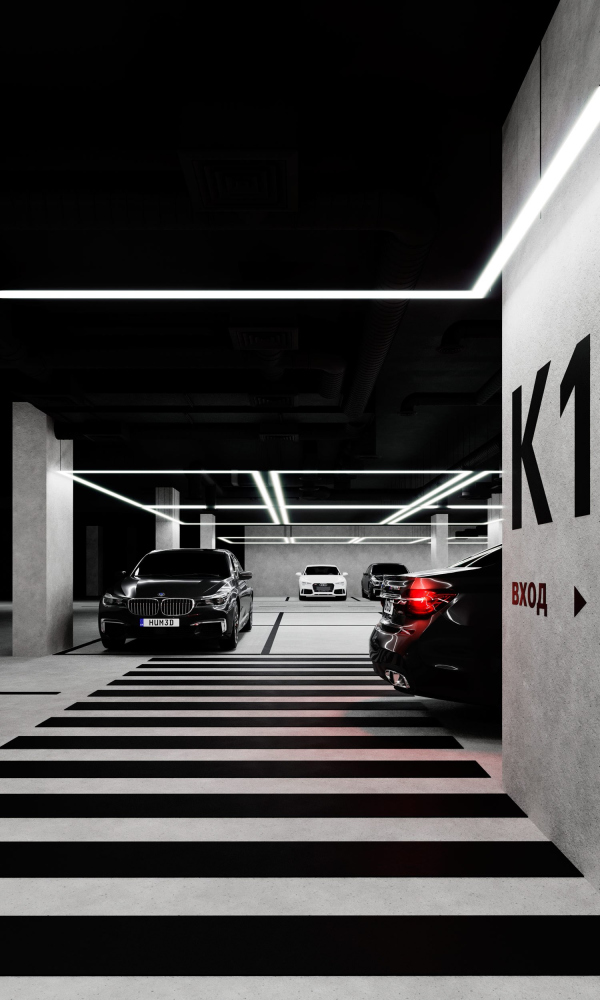 the interior of the parking garage. MOD housing complex. The projectCopyright: © Kleinewelt Architekten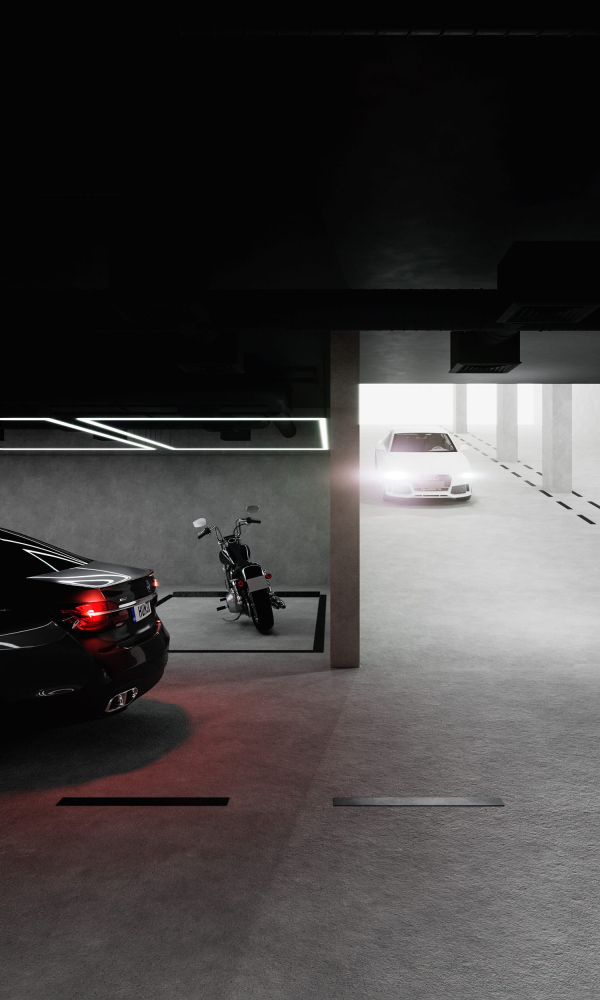 The interior of the parking garage. MOD housing complex. The projectCopyright: © Kleinewelt Architekten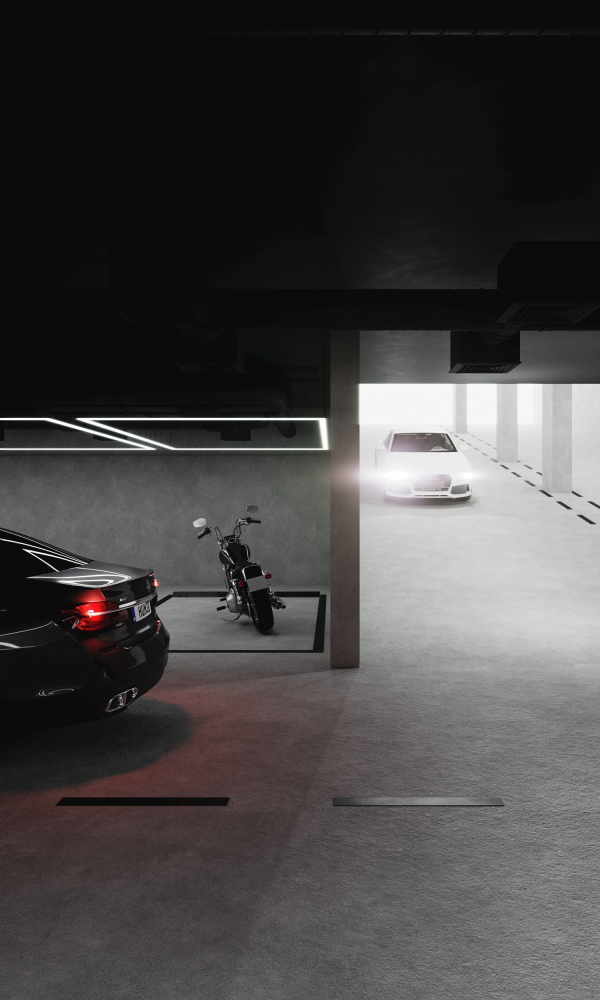 The interior of the parking garage. MOD housing complex. The projectCopyright: © Kleinewelt Architekten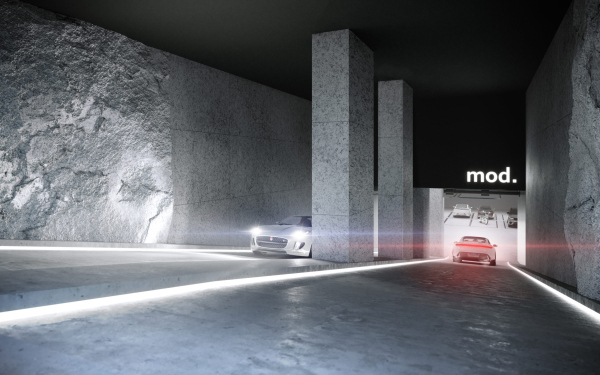 The interior of the parking garage. MOD housing complex. The projectCopyright: © Kleinewelt Architekten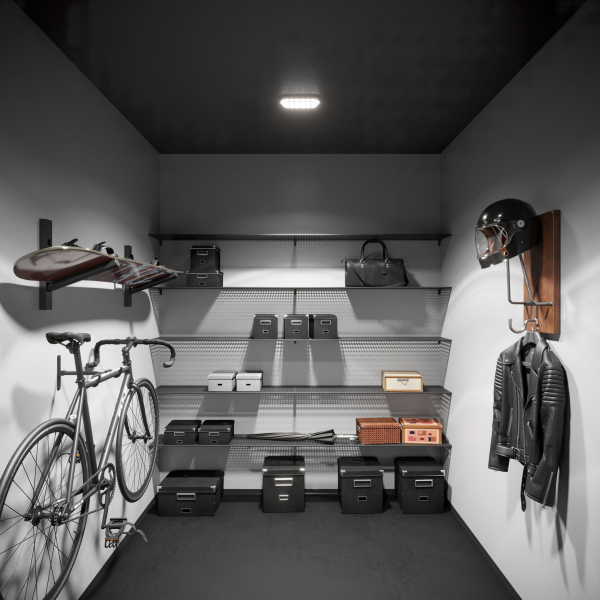 The storage. MOD housing complex. The projectCopyright: © Kleinewelt Architekten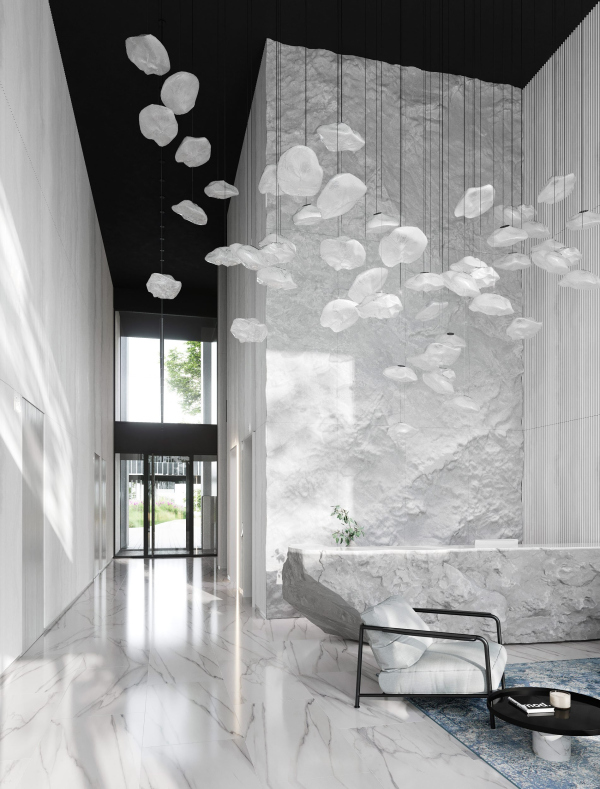 MOD housing complex. The projectCopyright: © Kleinewelt Architekten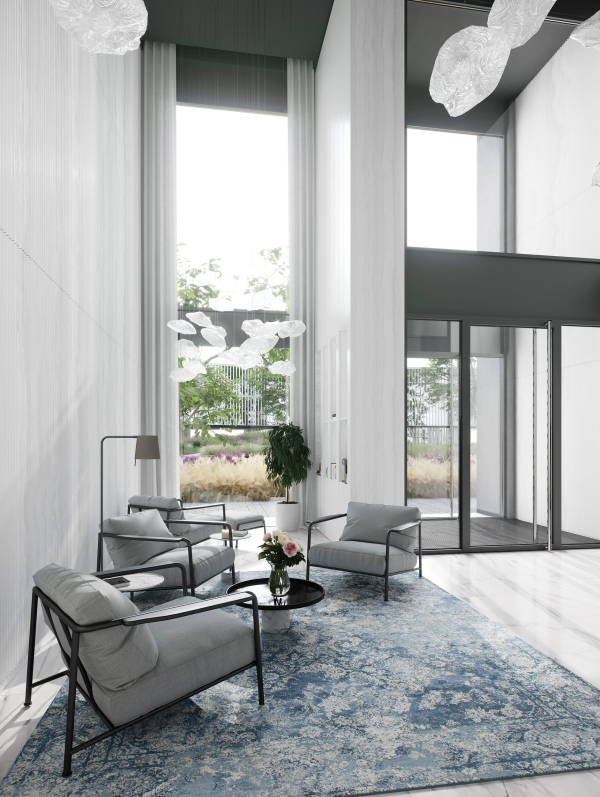 MOD housing complex. The projectCopyright: © Kleinewelt Architekten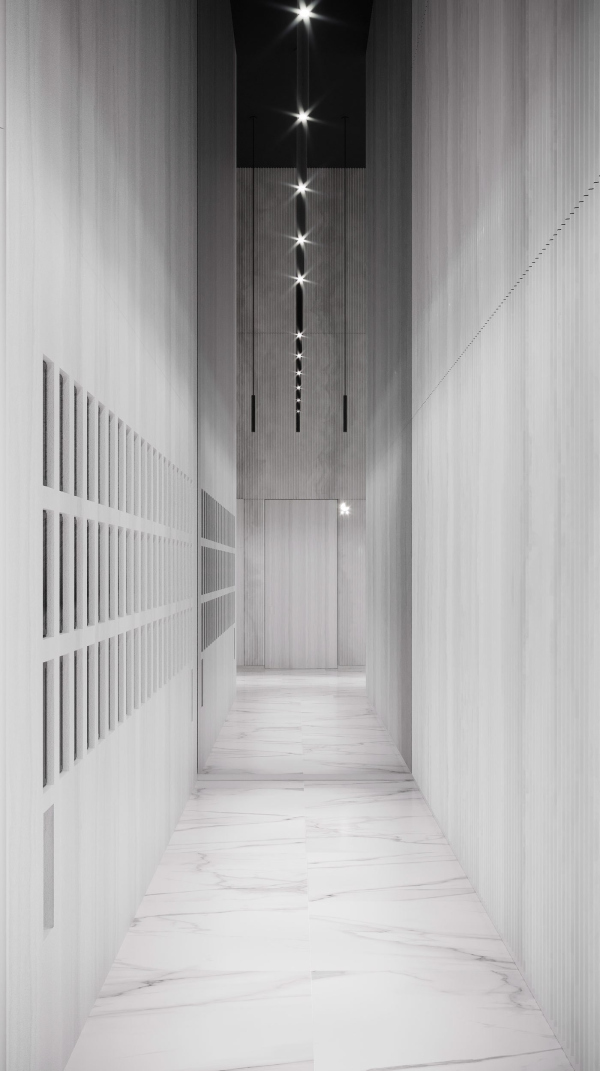 MOD housing complex. The projectCopyright: © Kleinewelt Architekten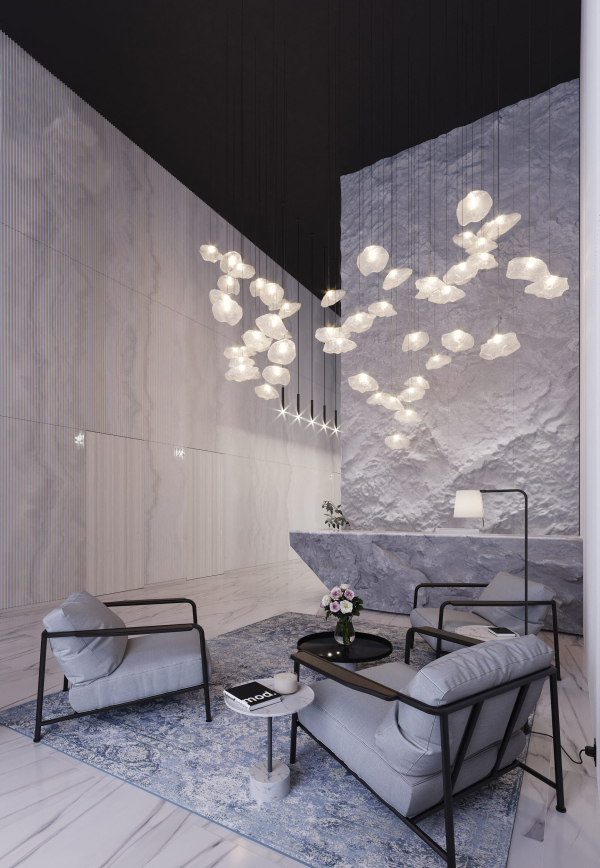 MOD housing complex. The projectCopyright: © Kleinewelt Architekten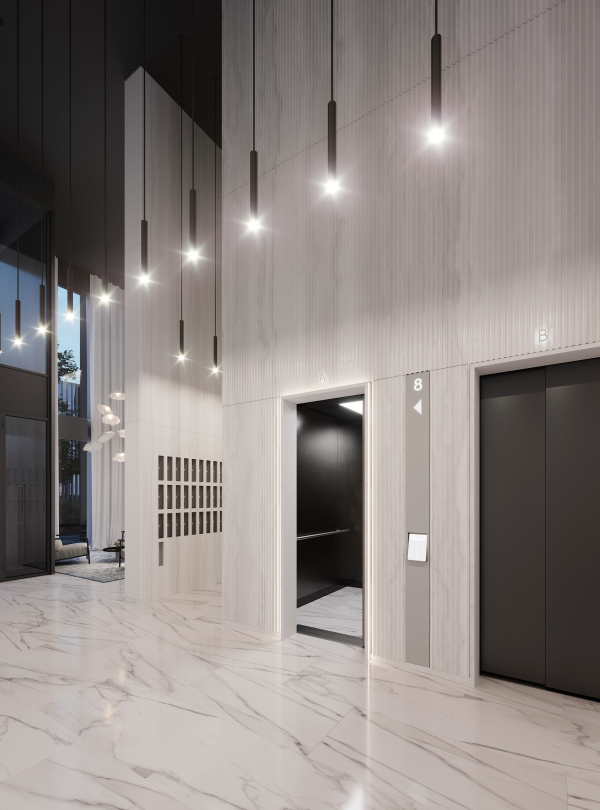 MOD housing complex. The projectCopyright: © Kleinewelt ArchitektenIt comes as no surprise that Kleinewelt Architekten describe their project as a “manifesto of Modernist minimalist principles in architecture”, and at the same time as “living, tactile, even romantic” – “sensual functionalism”. It includes a wide variety of techniques, its harmonies being based on a balance between bright and austere, strict repetitiveness and lively agility. Interestingly, the “lively” rather gravitates towards minor volumes and shapes: 9-story houses and the school, while the “lively” – towards the big ones, such as towers, even though they still react, albeit not without majestic calm, to this game – for example, with the differences of pitch of the facade grid, formed by the ventilation module sometimes on the left and sometimes on the right. MOD housing complex. The projectCopyright: © Kleinewelt ArchitektenPossibly, one could even say that this “activity gradient”, fading away in the volumes from small to large, takes a reverse path in the interiors, and completes the motion, offering the brightest accent inside one of the two largest towers. This is how a kind of dialectical spiral arises, within the framework of which a series of oscillations from regular and calm to bright and mobile are placed. It is possible that the ramp in the middle of the boulevard serves not only as the main attraction and the key to the emotional/spatial interaction between the courtyards, but also in some way a sign of the ambivalence of the architects’ manifesto presented here, combining a firm adherence to a strict “modernist” form and a willingness to “rock” it in order to breathe life into it. The construction of the MOD housing complex began in June 2021. |
|

